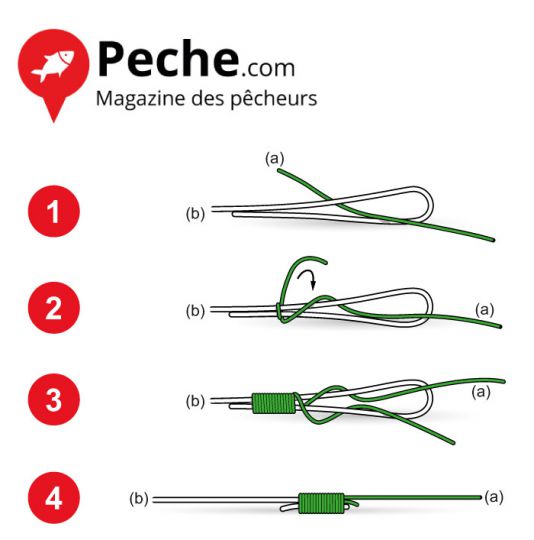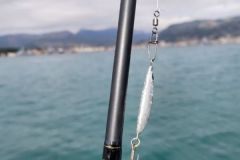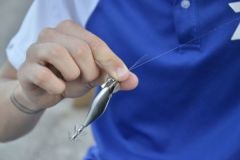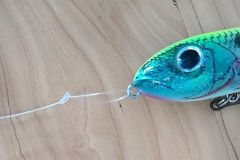To benefit from the finesse and sensitivity of a braid while protecting yourself from the abrasive relief of the bottom, use a monofilament leader. The albright knot is a simple and effective monofilament âeuros braid connection knot.
First, make a loop with the monofilament about 10 cm long and squeeze the loop a little to keep the two pieces of monofilament parallel. Insert 20 cm of braid into the loop. At about 3 cm, hold the braid between your forefinger and thumb, then make ten or so tight turns of braid on the monofilament. Finally, pass the braid back through the loop, moisten with saliva and tighten the knot. For effective tightening, hold the two monofilament strands in one hand and the two braid strands in the other, then tighten gradually. Then pull the four strands in succession, and finally test the strength of your knot by pulling quite hard.
A variation is to make 6 to 8 turns in one direction and the same number of turns in the other direction, ironing between each outward turn. This is known as the double albright knot.
This knot is strong and suitable for vertical fishing, but it doesn't go through the rings very well. For spin fishing, take a look at the two smooth and FG knots.

- 1 - Make a loop with the monofilament (b) and insert 20 cm of braid (a) through the loop.
- 2 - Hold the two pieces of monofilament (b) tightly together with your thumb and forefinger and start a series of turns with the braid (a), returning to the loop.
- 3 - Make about ten tight turns and pass the end of the braid (a) back through the loop where it entered.
- 4 - Hold the braid strands firmly and pull on the two monofilament strands to slide the coils to the end of the loop. Moisten the knot, tighten gradually and trim excess braid and monofilament to within 3 mm of the edge.

 /
/ 










